The ghosts of demonetisation
By RN Bhaskar
On November 25, the Finance Ministry of India made a surprisingly candid statement before the Lok Sabha (https://www.business-standard.com/finance/news/fake-currency-notes-of-rs-500-rs-2-000-surge-threefold-in-3-years-finmin-124112700867_1.html). It admitted that the number of fake Rs.500 notes was on the rise. Effectively, it was also an admission that one of the key objectives of the much-reviled demonetisation shock had been frustrated.
The statement was made in response to an unstarred question raised by an elected representative, demanding to know the number of counterfeit Rs. 500 notes of the new series that have been detected in the country. The revelations were staggering.
The incidence of fake Rs.500 currency detection dipped in just one year — 2023-24. Overall, each year saw a mind-boggling soaring of numbers of fake notes detected.
The fact that even the ‘demonetised’ Rs.2000 notes witnessed increasing numbers of fake notes could suggest that the entire monetary system has been compromised. It could mean that many powerful people got their Rs.2000 notes laundered by the system by pushing through fake notes. How this happened is something that only further investigations will tell.
But more worrying is the surge in fake Rs.500 notes. Fake notes surged from 21.9 billion pieces in 2018-19 to 85.7 billion pieces in 2023-24. That is a quadrupling of fake currency notes of the Rs.500 series.
This was pointed out in 2022 (https://asiaconverge.com/2022/11/gst-growth-does-not-mean-that-the-economy-is-growing/). Clearly, the Finance Ministry and enforcement officials had other more important things to attend to. The dangerous aspect of this surge in fake currency is that Rs.500 currency notes form a bulk of transactions in India as information gleaned from the RBI reveals.
While more and more of the ‘demonetised’ Rs.2000 notes were now being detected, it is the circulation of the new series of the Rs.500 notes that is perplexing and worrisome. Those are the notes that are mostly in circulation. The Rs. 500 currency notes account for a whopping 41% by volume and 86.6% by value. This means that there is every likelihood of people losing confidence in in the country’s currency because there is no way of knowing if such notes have even been dispensed by bank ATM machines as well. That is scary.
The unrelenting surge in the use of Rs.500 notes becomes obvious when you study the data for previous years. It is when one juxtaposes both the tables that one can see how the share of Rs.500 notes has gone up from 25% of total currency notes in terms of volume in 2020 to 35% in 2022. It further climbed to 41% in the first 11 months of 2024. When it comes to the share of the value of total currency notes, the share of Rs.500 notes climbed from 61% in 2020 to 73% in 2022. It swelled further to 87% in the first 11 months of 2024.
The numbers also reveal another interesting aspect. They show that India’s GDP grew from $2.67 trillion in 2020 to $3.65 trillion in 2023. This represents an increase of 36.7% during this period.
Now compare this growth with the growth in the value of money circulated. You will discover that money was allowed to grow by 45.6%. Clearly, someone was busy at the printing press churning out more notes than warranted by GDP growth.
 Equally worrying is that this surge in currency was in spite of the impressive zooming of digital transactions. Since digital transactions do not use currency notes in their physical forms, it means that the total currency in circulation could be much more. It could even suggest a higher velocity of money than the government admits. This, in turn, means that the markets are awash with money, though most people remain poor.
Equally worrying is that this surge in currency was in spite of the impressive zooming of digital transactions. Since digital transactions do not use currency notes in their physical forms, it means that the total currency in circulation could be much more. It could even suggest a higher velocity of money than the government admits. This, in turn, means that the markets are awash with money, though most people remain poor.
Is it any surprise then that two developments have taken place? First, there has been a surge in inflation. Second, there has been a devaluation in the value of the Indian rupee against the US$. And the declining consumption by common people shows that the unequal ownership of money is more staggering than thought previously.
Will the chief economic advisor explain why these facts have not been made abundantly clear in the Economic Survey?
This is in addition to the reckless manner in which the finance ministry and the RBI have churned out currency notes and coins with little regards to the rules of numismatics. Many of the coins confuse people – I for one am constantly confused and have to peer at the coins carefully before accepting them or giving them away. Similarly, I have accidentally given away Rs.50 instead of Rs.100 because the colours and sizes are so very similar (free subscription — https://bhaskarrn.substack.com/p/does-the-rbi-respect-its-own-rules).
Needless harassment
Add to all this was the needless hardship that common folk had to go through. Remember, demonetisation was announce announced suddenly, and made effective within days of the announcement. Many small income persons lost a lot of money (more details can be got from this Jan 2017 booklet on Demonetisation and Digitisation — The road ahead published by the Free Press Journal which can be downloaded from https://asiaconverge.com/wp-content/uploads/2017/03/2017-02_Demonetisation-booklet2.pdf
While demonetisation did mean an increase in digital transactions, major flaws still remain, thanks to unconcern among polity makes. A regulator for ecommerce still remains to be put in place (https://www.youtube.com/watch?v=QIfiZFMTR4Y). The frightening increase in cyber crimes underscores the desperate need for a regulator and a more people friendly solution to cyber crimes. Today, one is not sure if the police apps are also free from security bugs (https://asiaconverge.com/2024/08/mumbais-traffic-police-has-huge-gaps-in-its-service-delivery/).
Moreover, the government has yet to come out with a white paper on what digital currencies cost the Indian economy (https://asiaconverge.com/wp-content/uploads/2017/03/2017-02_Demonetisation-booklet2.pdf).
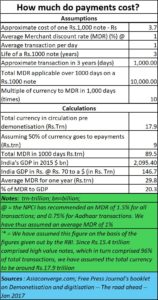 At the time of announcing demonetisation, the government even attempted to demonstrate that it meant business. It conducted raids and seizures across the country. Nothing much was found. “In its submission before the Supreme Court of India, the government stated, on 23 July 2017, that it had uncovered undisclosed income of Rs.71,941 crore during the three years ranging from 2014-15 to 2016-17 (https://www.moneycontrol.com/news/uncategorized/government-figures-suggest-demonetisation-wasnt-worth-the-trouble-2333983.html). It can also be found at https://asiaconverge.com/2017/07/government-figures-suggest-demonetisation-wasnt-worth-trouble/.
At the time of announcing demonetisation, the government even attempted to demonstrate that it meant business. It conducted raids and seizures across the country. Nothing much was found. “In its submission before the Supreme Court of India, the government stated, on 23 July 2017, that it had uncovered undisclosed income of Rs.71,941 crore during the three years ranging from 2014-15 to 2016-17 (https://www.moneycontrol.com/news/uncategorized/government-figures-suggest-demonetisation-wasnt-worth-the-trouble-2333983.html). It can also be found at https://asiaconverge.com/2017/07/government-figures-suggest-demonetisation-wasnt-worth-trouble/.
A mockery of security
It also makes a mockery of the song and dance made by mainstream media about how the former finance minister — P. Chidambaram – had opted for technology that posed a huge security risk for Indian currency (https://www.business-standard.com/article/news-ani/subramanian-swamy-blames-ex-finance-minister-chidambaram-for-fake-currency-in-india-116110901699_1.html). That was in November 2016.
In view of the increase in fake currency, it is worth asking the government whether the newer technology has proved to be more effective. Or if remedial steps have been taken since 2016. Or was all that sound and fury meant to signify nothing?
Conclusion
A white paper from the government is urgently required about the state of the Indian currency which has slipped to the lowest levels against the US$.
It needs to explain the causes for the surge in currency – far in excess of GDP growth rates.
And it needs to explain why this surge in currency did not reach common consumers, judging by the consumption slowdown.
=======================
Do view my latest podcast on RIC (Russia India China) at https://youtu.be/JSRWYUbKen8
=======================












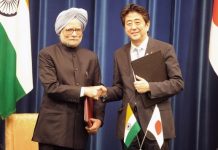













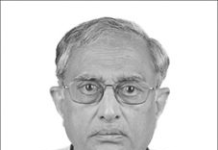



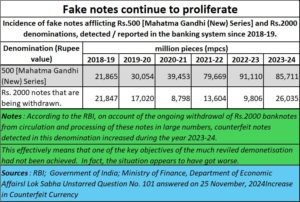
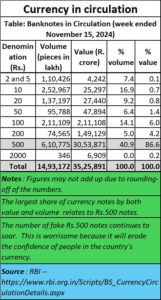
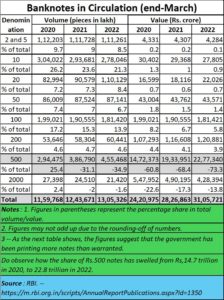







COMMENTS